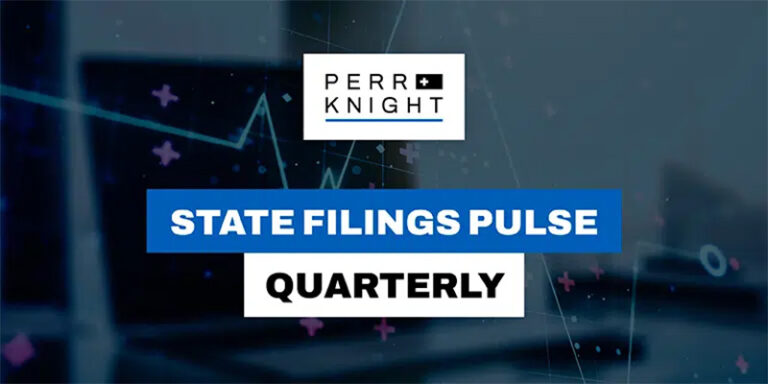Best Practices When Addressing Tough DOI Rate Interrogatories
- Written By Barbara Glasbrenner

By: Barbara Glasbrenner & John Mooney
Benjamin Franklin once stated, “An ounce of prevention is worth a pound of cure.” This is certainly the case when submitting an insurance filing to a State Department of Insurance (“DOI”). Preparing a meticulous and comprehensive submission can help mitigate issues, but it doesn’t necessarily eliminate the possibility of objections from the DOI.
Objections arise for various reasons, including but not limited to regulatory changes, interpretation differences, and jurisdictional nuances. When the dreaded form or rate interrogatory is received, here are some best practices from our experienced insurance filing support teams.
Don’t panic
Despite your best efforts to submit a complete, comprehensive filing, it is always possible that you will receive objections from one or more DOIs. The more lines of business you write and the more jurisdictions you operate in, the more likely you are to receive an interrogatory. Each DOI has specific filing and supporting documentation requirements – some with commonalities. Accepting objection letters and responding promptly are simply processes that enable you to move quickly, adjust the filing, and move closer to approval.
Read carefully and respond thoroughly
If an objection is not answered correctly, it will delay the filing’s approval. Thoroughly read each objection and only answer the question asked. Each objection should be responded to professionally, clearly, and concisely. The response should be complete and provide adequate supporting documentation, but without providing extraneous answers that may not be relevant to the respective objection. Submit your response for peer review or return to it with fresh eyes to confirm all the above have been addressed.
Make it easy for the reviewer
Provide necessary documentation in a manner that is easy for the regulator to address each interrogatory sufficiently. Logically rename file attachments and reference file names within the responses, where applicable.
If you revised a form, rating, or other piece of supporting documentation based on an objection, make a clear note in your response (e.g., “XYZ document has been revised and is attached [see FILE NAME] and replaces the first version of the same document.”)
In short, make it straightforward for the reviewer to follow the changes from the initial submission to the objection to the revision.
Reach out
Statute interpretations vary by jurisdiction, so a lack of understanding of why you did not fulfill a regulatory requirement does not necessarily indicate a shortcoming on your part. Not only are some statutes interpreted differently across regions, but the wording is sometimes vague.
If your objection letter contains an item you don’t understand, do not be afraid to contact the DOI directly, either through email, phone, or video call. Discussing the objection via video call has benefits, especially if you have received the same objection multiple times. Putting a face to a name and connecting personally with a person at the DOI can help you quickly clarify what you need to correct so the approval process doesn’t stall.
Track dates meticulously
Responding to the objection(s) by the date provided by the regulator is important. Response(s) not received by the due date could result in additional delays in the filing (e.g., disapproval). However, if you believe you will require more time than the state allows, submit an extension request as early as possible to give the reviewer time to assess and issue a revised due date. Note that some states have limitations on when extensions must be requested and how many extensions may be allowed.
Keep files and correspondence organized
Before submitting the responses and supporting documentation, ensure all documents are organized and correctly attached. Always double-check responses for accuracy and completeness, making sure you have read all pages of the objection letter (a common mistake is failing to see and respond to questions on subsequent pages). It is also important to submit the information as requested by the regulator (e.g., as part of the response, SERFF Supporting Documentation).
Leverage technology to stay organized. Tracking software like StateFilings.com was explicitly developed to align with the insurance state filings process, enabling users to store and track submissions, due dates, correspondence, and supporting documents in a central, secure repository. Two-way integration with SERFF allows users to post filings to each state, receive communications directly from DOIs, and track due dates – all in one place.
Stay professional
Responding to objections might cause frustration, but always reply to interrogatories with a cooperative attitude. Don’t take the objection personally. At the end of the day, the regulator is just doing their job. In any communication, written or verbal, treat the regulator with respect. Remember, regulators share your objective of arriving at an approved submission. Using a kind tone demonstrates professionalism, which opens the door for further communication.
Research
It can help to review previously approved filings and search for responses to similar objections. If you use an example of a previously approved filing, be prepared, as the filing may have been approved in error. While a level playing field among companies is important, each filing must be looked at on a case-by-case basis. If the previously approved filing language is a clear-cut violation of a statute, administrative rule, or commissioner’s order, the DOI may respond that it will ask the approved company to file and correct the approval error.
Rely on experts
Managing multiple filings across all jurisdictions is a logistical challenge for insurance companies at every scale. Partnering with actuarial consulting and insurance filing support teams like the experts at Perr&Knight can save time, clear up questions, and accelerate speed-to-market. Our industry veterans possess decades of experience submitting filings in all 51 U.S. jurisdictions across all lines of business. Leveraging this expertise can help streamline your filings. We can provide guidance at any stage of the state filings process, including support for objections to filings we did not initially submit. We’re here to help at any point in the process – even under tight deadlines.
It’s crucial to anticipate potential areas of concern and address them proactively to minimize delays and ensure a smooth approval process. When responding to the DOI’s objections, especially the “tough” interrogatories, it is essential to be thorough, clear, and prompt. By following these strategies, you can effectively respond to filing interrogatories and enhance the likelihood of a favorable outcome.
Contact Perr&Knight today to speak with our insurance filing support team.



